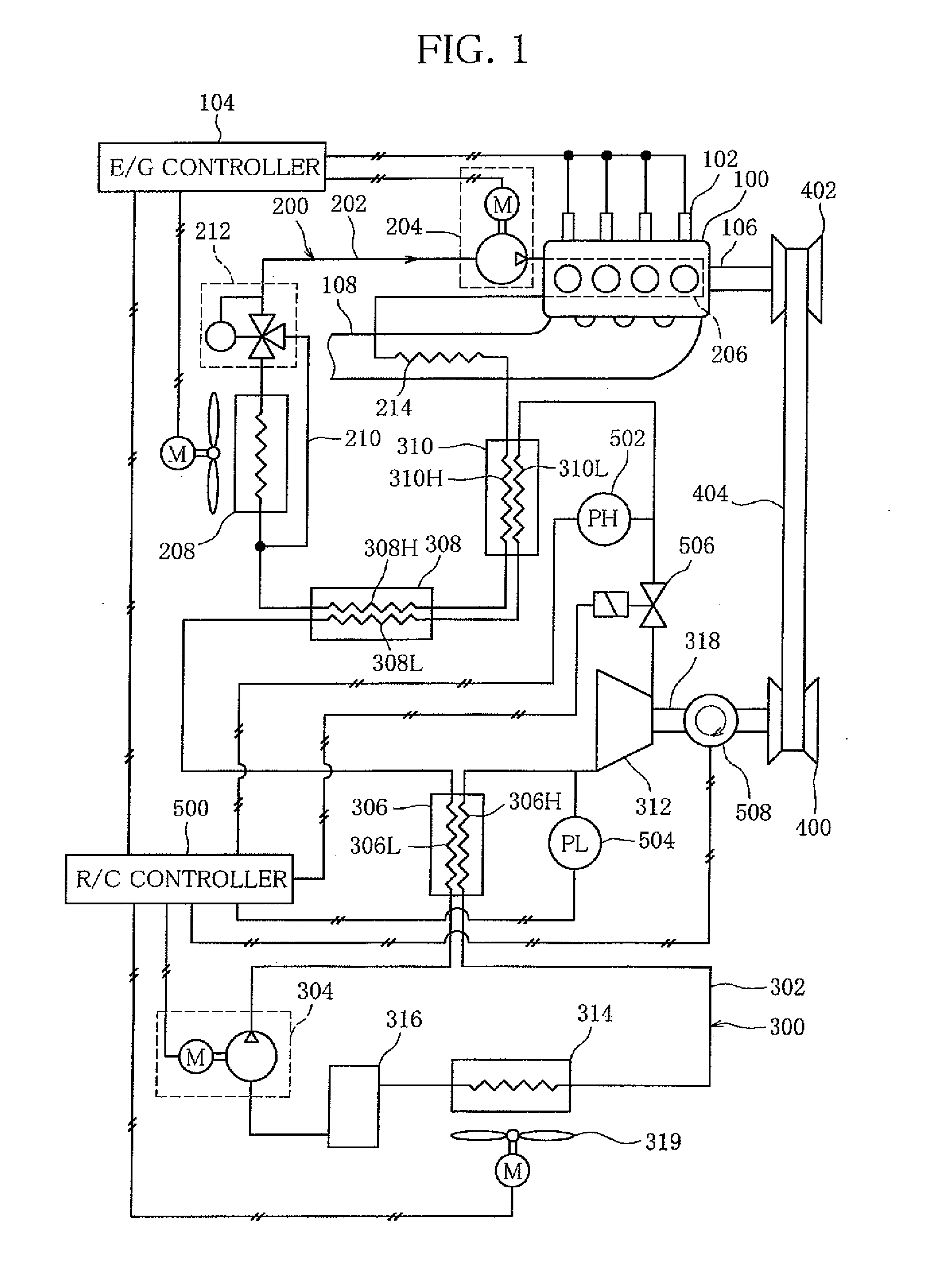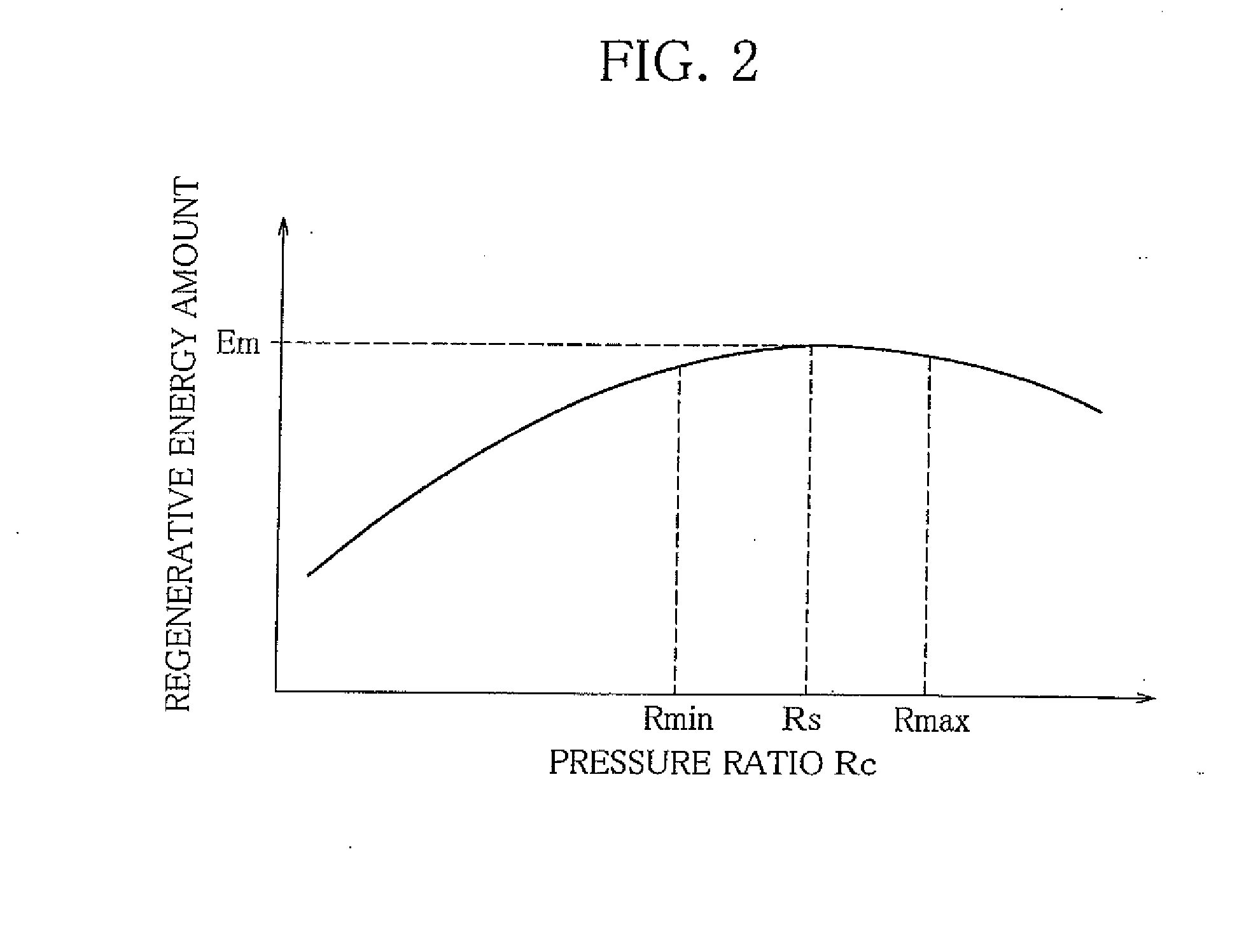Waste Heat Recovery System of Internal Combustion Engine
a heat recovery system and internal combustion engine technology, applied in the direction of machines/engines, mechanical equipment, lighting and heating apparatus, etc., can solve the problems of reducing the output of the expander shaft, namely, regenerative energy amount, and the amount of evaporation of the heat-transfer media is not sufficient, so as to prevent a decrease in and increase the pressure of the heat-transfer media
- Summary
- Abstract
- Description
- Claims
- Application Information
AI Technical Summary
Benefits of technology
Problems solved by technology
Method used
Image
Examples
embodiment 1
[0074]FIG. 1 shows a schematic configuration of a waste heat recovery system of an internal combustion engine 100 according to one embodiment of the invention.
[0075]The waste heat recovery system of the internal combustion engine 100 is designed to convert into energy (regenerative energy) the heat generated in the internal combustion engine 100. More specifically, the heat generated in the internal combustion engine 100 is supplied through a cooling device 200 of the internal combustion engine 100 to a Rankine cycle circuit 300. The heat is then converted into torque in the Rankine cycle circuit 300. The torque is transmitted to the internal combustion engine 100 and aids the internal combustion engine 100.
[0076]The internal combustion engine 100 is, for example, a diesel engine for a vehicle. Diesel oil as fuel is supplied into cylinders of the internal combustion engine 100 through injectors 102. The injectors 102 are controlled by an E / G controller 104. An applied amount of an a...
PUM
 Login to View More
Login to View More Abstract
Description
Claims
Application Information
 Login to View More
Login to View More - R&D
- Intellectual Property
- Life Sciences
- Materials
- Tech Scout
- Unparalleled Data Quality
- Higher Quality Content
- 60% Fewer Hallucinations
Browse by: Latest US Patents, China's latest patents, Technical Efficacy Thesaurus, Application Domain, Technology Topic, Popular Technical Reports.
© 2025 PatSnap. All rights reserved.Legal|Privacy policy|Modern Slavery Act Transparency Statement|Sitemap|About US| Contact US: help@patsnap.com



